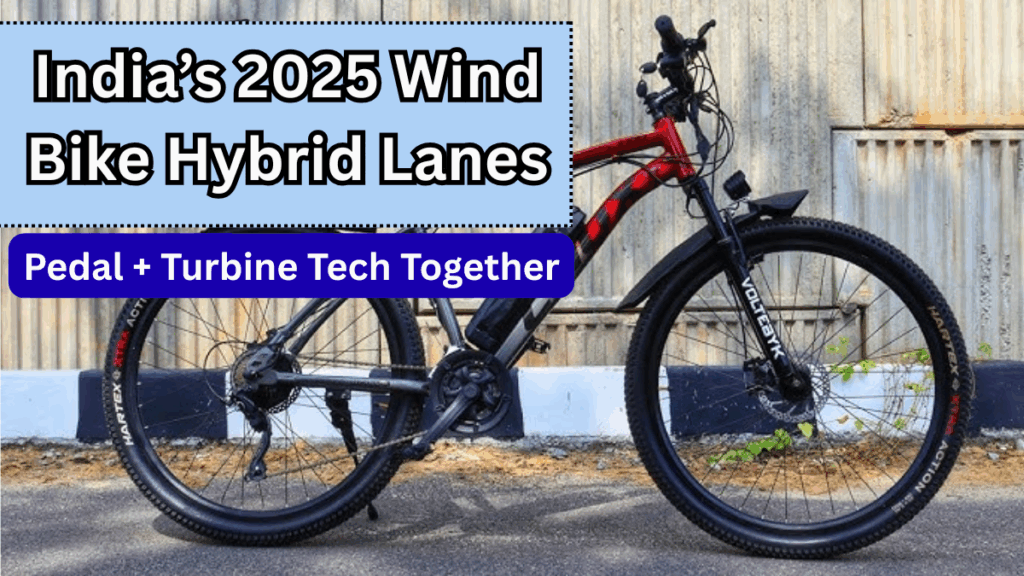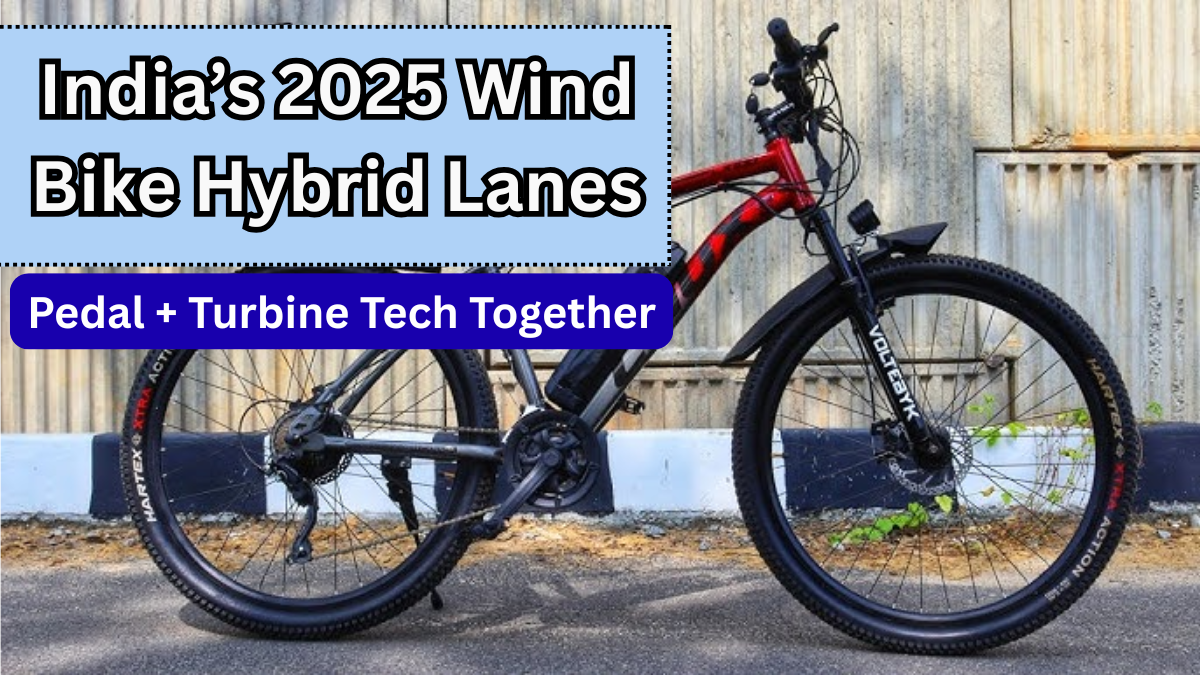India is stepping up its sustainability game with an innovative project that combines cycling with renewable energy generation. The Wind-Bike Hybrid Lanes aim to merge the simple joy of pedaling with cutting-edge turbine technology, creating a unique eco-friendly transport solution. This initiative is poised to redefine urban commuting while supporting India’s green energy goals.

What Are Wind-Bike Hybrid Lanes?
Wind-Bike Hybrid Lanes are specially designed bicycle lanes equipped with miniature wind turbines. These turbines capture the airflow generated by cyclists and convert it into electricity. Essentially, every pedal stroke contributes not just to personal fitness but also to powering local infrastructure.
Key features include:
-
Integrated micro wind turbines along the lane edges
-
Smart energy storage systems to save generated electricity
-
Safety-focused lane design with eco-friendly materials
-
Real-time energy tracking via mobile apps
This project is part of India’s broader commitment to sustainable transport and renewable energy, making Eco Cycling India a realistic and scalable movement.
How Do Wind-Bike Hybrid Lanes Work?
The technology behind Wind-Bike Hybrid Lanes is straightforward yet effective.
-
Cycling generates airflow – As cyclists ride, air flows across mini turbines installed along the lanes.
-
Turbines convert wind into energy – The turbines harness kinetic energy from the moving air.
-
Energy is stored or used locally – Electricity generated is stored in local batteries or used to power street lights, charging stations, and public amenities.
Benefits of Wind-Bike Hybrid Lanes
Wind-Bike Hybrid Lanes offer multiple benefits for cities, cyclists, and the environment:
| Benefit | Details |
|---|---|
| Sustainable Energy | Each ride contributes to renewable electricity generation. |
| Eco-Friendly Commuting | Encourages cycling over motorized transport, reducing carbon emissions. |
| Fitness + Innovation | Combines physical activity with smart tech engagement. |
| Local Infrastructure Power | Supports lighting, public Wi-Fi, and charging stations along the lanes. |
| Community Engagement | Increases awareness about renewable energy and sustainable lifestyles. |
By integrating these lanes into city planning, India is leading the way in merging transport innovation with environmental responsibility.
India’s Push for Eco Cycling
The Eco Cycling India movement aims to make cycling not only a mode of transportation but also a contributor to clean energy. Wind-Bike Hybrid Lanes are a flagship project under this initiative, offering an incentive for more citizens to embrace cycling. Urban planners hope that these lanes will reduce traffic congestion, cut pollution, and make cities more pedestrian and cyclist-friendly.
Implementation Plans for 2025
-
Pilot Projects – Major metro cities like Delhi, Bengaluru, and Pune will introduce pilot lanes.
-
Smart Integration – Lanes will be equipped with sensors to track energy output and cyclist flow.
-
Community Programs – Schools and local communities will be encouraged to participate in cycling events along the hybrid lanes.
-
Scaling Nationwide – Following pilot success, more cities will adopt the model as part of sustainable urban planning.
FAQs
Q1: What exactly is a Wind-Bike Hybrid Lane?
A: It’s a cycling lane integrated with small wind turbines that convert airflow from cyclists into electricity, supporting local infrastructure and sustainable energy.
Q2: How much energy can these lanes generate?
A: Depending on cyclist traffic, a single kilometer of hybrid lane can power streetlights, public Wi-Fi, or EV charging stations along its length.
Q3: Are these lanes safe for daily commuters?
A: Yes, safety is a priority. The lanes are designed with smooth surfaces, protective barriers, and clear markings to ensure a safe cycling experience.
Q4: How does this fit into Eco Cycling India?
A: Wind-Bike Hybrid Lanes are a key project under Eco Cycling India, promoting clean energy, healthy lifestyles, and sustainable urban mobility.
Click here to learn more
